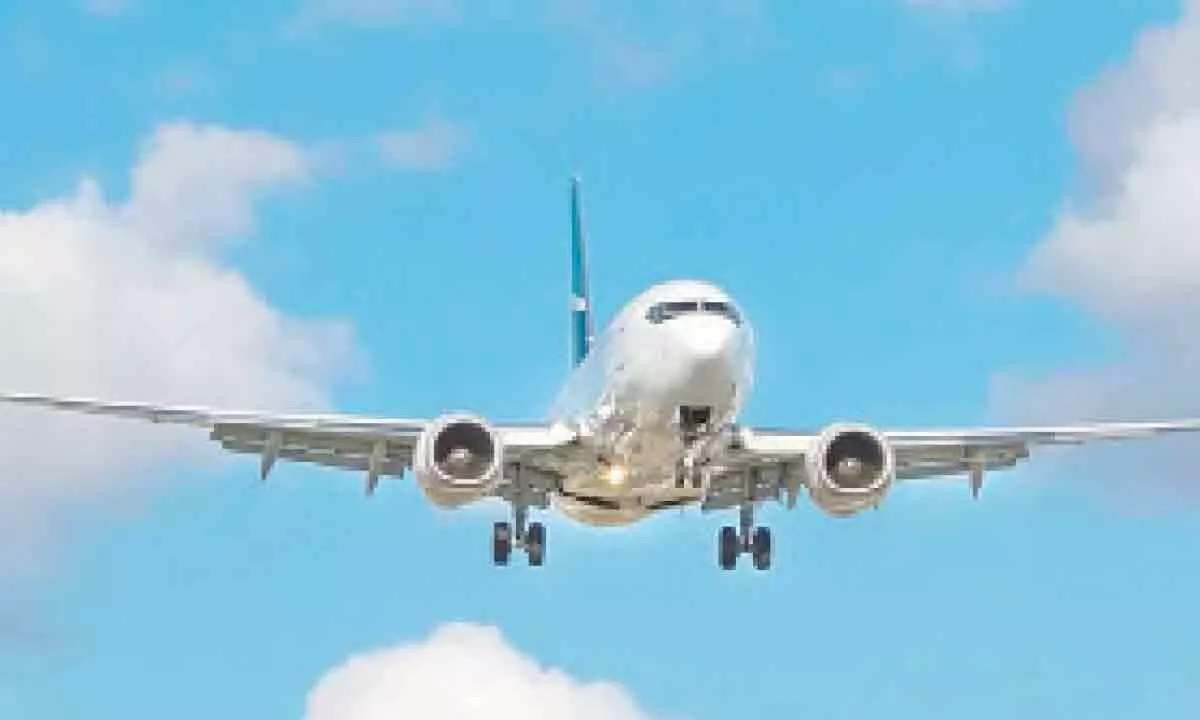Live
- PM Modi highlights govt's efforts to make Odisha prosperous and one of the fastest-growing states
- Hezbollah fires 200 rockets at northern, central Israel, injuring eight
- Allu Arjun's Family Appearance on Unstoppable with NBK Breaks Viewership Records
- Unity of hearts & minds essential for peace & progress, says J&K Lt Governor
- IPL 2025 Auction: I deserve Rs 18 cr price, says Chahal on being acquired by Punjab Kings
- EAM Jaishankar inaugurates new premises of Indian embassy in Rome
- Sailing vessel INSV Tarini embarks on second leg of expedition to New Zealand
- Over 15,000 people affected by rain-related disasters in Sri Lanka
- IPL 2025 Auction: RCB acquire Hazlewood for Rs 12.50 cr; Gujarat Titans bag Prasidh Krishna at Rs 9.5 crore
- Maharashtra result reflects the outcome of Congress' destructive politics: BJP's Shazia Ilmi
Just In
Budget 2024: Aviation industry seeks hike in fund allocation


The sector is looking at reduction in levies and taxes to improve its financial health
Today, it is estimated that India needs close to $ one trillion investment in 10 years to bring infrastructure to global standards. This is already happening with $110-$120 billion infused into infrastructure capex each year.
The Union Budget 2024-25 is likely to infuse Rs. one trillion, or $125 billion, into infrastructure capex, which would be three per cent of the total GDP. What we need to ponder is in understanding about the infrastructure one is talking about. While the definition of infrastructure can include a lot of hard and soft aspects, we shall focus on the four core infrastructure themes of aviation, roadways, railways, and ports. We will also look at emerging green infrastructure.
For any growing economy, aviation infrastructure lies at the core of its growth. In the last few quarters, aviation sector has seen numerous challenges. Even as the demand for tourism and hospitality picked up post-pandemic, the aviation sector was besieged by stiff competition, higher ATF (aviation turbine fuel) prices, and higher leasing costs due to the bankruptcy of Go First. In this background, here are key expectations from Budget 2024-25.
The aviation sector is looking up to Budget 2024-25 for financial aid in order to tide over the crisis and also a reduction in levies and taxes to revitalise operations and improve its financial health. Most aviation companies rely on the spread between RASK (revenue per average seat km) and CASK (cost per average seat km). That is under stress and so the sector expects rationalisation of duties on ATF and a sharp reduction in airport charges, as well as charges pertaining to parking, landing and navigation charges levied on them. The aviation section also expects financial support to help them tide over the crisis of business cycles and losses on foreign exchange on lease charges payable.
The regional connectivity scheme (RCS) under the UDAN initiative had taken a back-seat for some time. The current budget is likely to revive that in a big way with an allocation that higher by 25% to 30% over last year. The recent Ayodhya aviation connectivity is a classic example of how events can be leveraged to expand the aviation story to smaller places. The budget is also expected to accelerate focus on setting up new airports and expanding capacities at key airports, so current capacity constraints are avoided. There is also a tourism angle to the aviation sector and one of the pre-requisites to a good tourism story is good connectivity and infrastructure in such areas of tourist interest. In addition, the aviation sector also expects that the Budget 2024-25 will give a boost to tourism through more direct measures like developing iconic tourist destinations and expanding the visa on arrival scheme to more countries.
The Indian government has put a major thrust on in-sourcing defence products as part of the Atma Nirbhar Bharat scheme. The aviation sector wants this approach to be extended to the airlines also. For example, one area to start in-sourcing would be in the MRO (maintenance, repairs and operations) of aircraft. That is something that can be managed in India and it would be cost effective and time effective. Budget 2024-25 is expected to focus on incentivising the MRO sector by building the necessary infrastructure for promoting aircraft support operations in India itself. The aviation sector broadly needs infrastructure support and a permanent fall-back mechanism when the going gets tough. In last 100 years of aviation, airlines may have collectively made a loss, but their contribution to economic growth is beyond question.
Unni Bhaskar, Managing Director of Uno Technology Private Limited, says “India, currently the world’s fastest-growing aviation market and the third-largest domestic market, has experienced a significant reduction in budget allocation for the Ministry of Civil Aviation (MoCA) over the last decade. The allocated funds dropped from Rs. 7,377.98 crore in 2014-15 to Rs. 3,113.36 crore in 2023-24. Despite this decline, I advocate a 15-20% increase in fund allocation to the dynamic aviation sector, considering the government’s substantial infrastructure initiatives and the upcoming 2024 elections.
India has historically been a price-sensitive market, which has posed challenges to investments in cutting-edge airport infrastructure. However, the outlook is ripe for substantial technological advancements. With the private sector poised to assume a more influential role, we envision a profound shift in the landscape of the Indian aviation industry, setting the stage for a promising upward growth trajectory.”
There is an ambitious plan to invest $ 15 billion in constructing 80 new airports by 2025 has generated enthusiasm within the airport construction industry. Also, the MoCA’s plea for a 25-30% increase in the FY25 budget for the successful UDAN scheme, aimed at regional connectivity, could signify a positive turning point for the airport construction sector.

© 2024 Hyderabad Media House Limited/The Hans India. All rights reserved. Powered by hocalwire.com






